Winter this year was longer and colder than usual, and the deeper-than-normal snow lingered long past its ‘best before’ date. I worried that spring would be so short that our sugar bush would yield less sap than normal, and so less of that delicious product, maple syrup.
I needn’t have worried. The late spring pushed everything back several weeks — we didn’t begin to gather sap until March 26, and in some years we have finished by then. But even with the late start, the results were within the normal range for a sugar bush the size of ours.
Making maple syrup is a time and labour-intensive process. The first step is to tap the trees, and since this often happens when the snow is still knee deep, it takes time.
Sap is the lifeblood of a tree, carrying nutrients from the earth to the buds and leaves that follow. Warmer days send a signal: time for the sap to flow. In a normal year the flow starts slowly, then builds to a crescendo before tapering off to a slow drip.
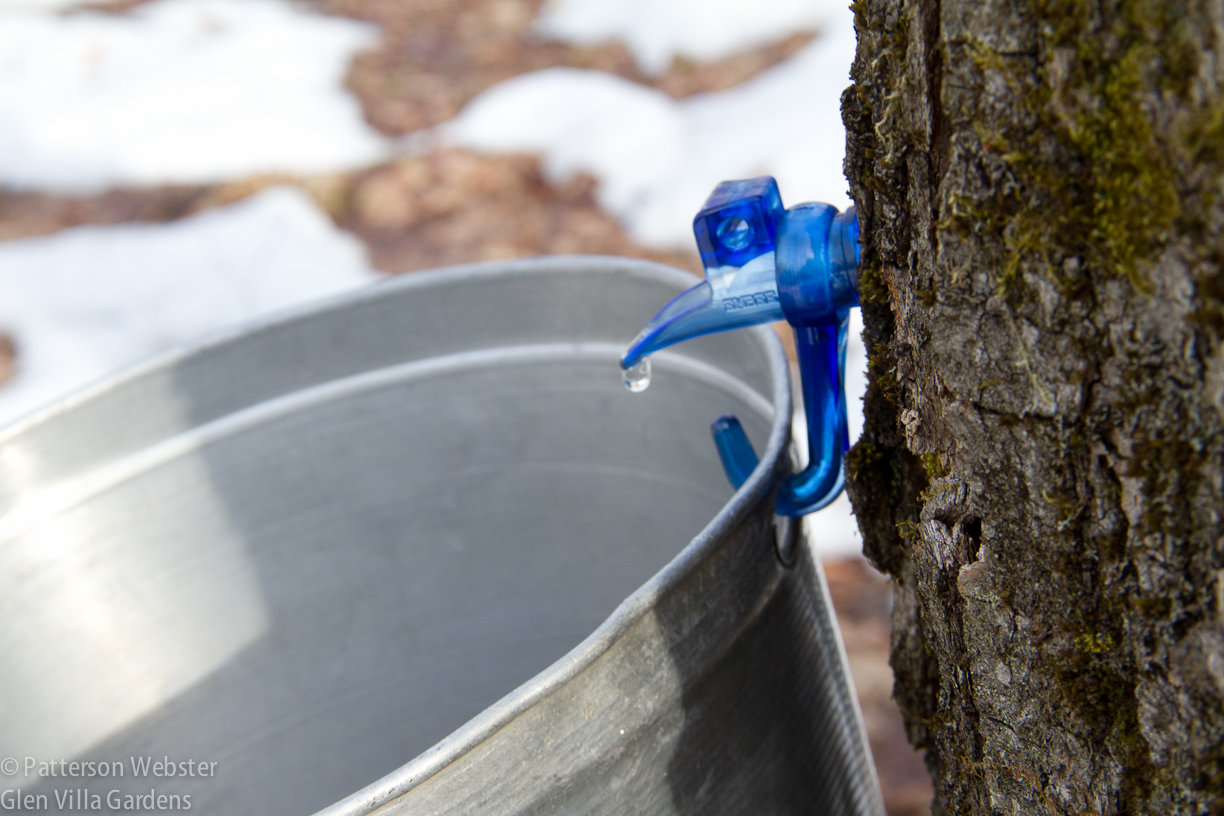
Buckets hang from a hook that is inserted into the tree. Tapping the same tree too many years in a row isn’t good for it. We usually tap a tree for two years and then let it heal for two or three years before tapping it again.
We have lots of sugar maple trees but because we don’t produce syrup commercially we only use about 400 buckets. From them, we hope to produce 40 gallons of syrup — the standard ratio is 40 gallons of sap for one gallon of syrup, and taking a gallon of sap from a tree doesn’t harm it. This year we made 35 gallons. The quantity is out of our control — it’s determined by how freely the sap runs, the sugar content of the sap, and the general health of the tree itself. The colour of the syrup is determined by the temperature and by where the tree grows. Days that are too hot make the sap milky and milky sap produces darker syrup. Trees on rocky ground produce lighter-coloured syrup than trees growing on clay, and lighter syrup is more highly-rated in the judging that takes place at county fairs.
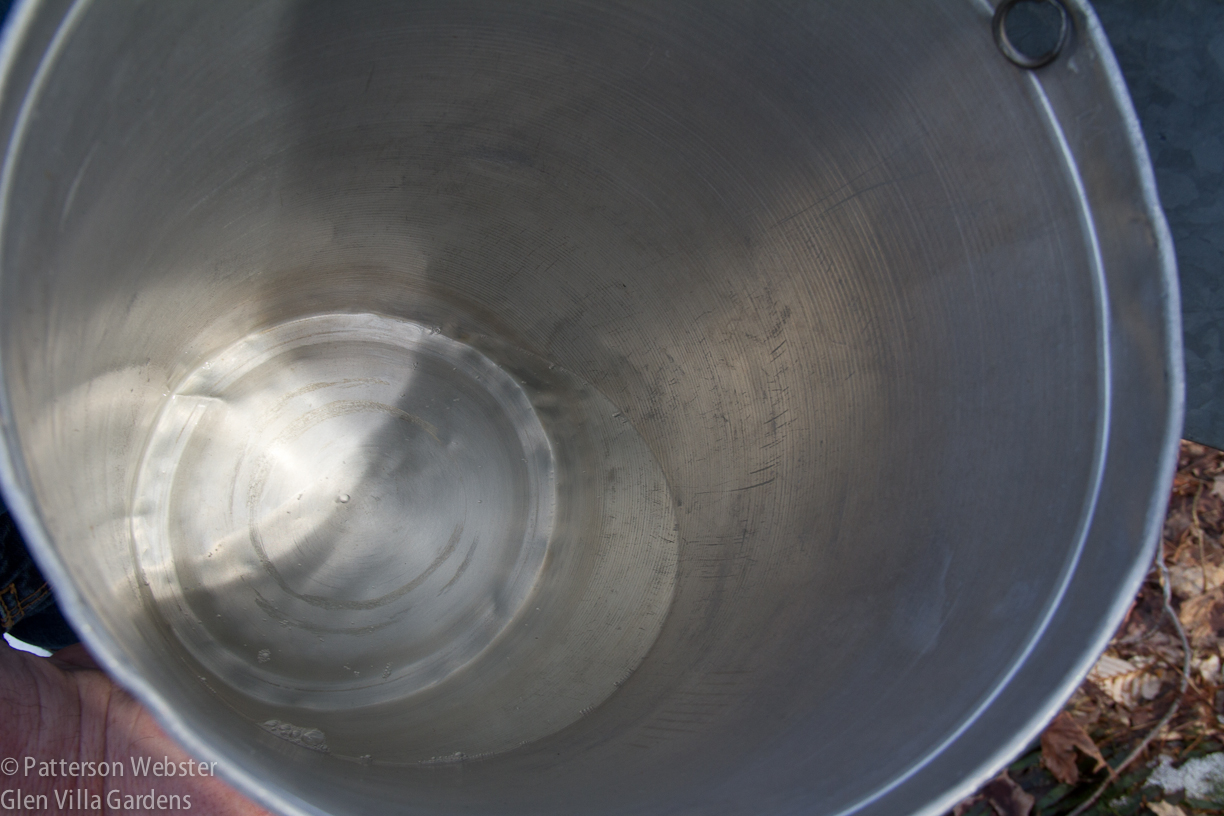
Sap is as clear as water but with a sweetness that water lacks. Children like to drink it straight from the bucket. Some adults do, too.
With nights that dip below freezing and with bright sunny days when the temperature rises well above, sap can pour out of a tree so quickly that it is hard to collect it all before the bucket overflows. Commercial operations gather sap through plastic hoses but at Glen Villa we do it by hand. Master syrup-makers Jacques Gosselin and Ken Kelso tip the sap from the buckets hanging on the trees into plastic buckets that they carry to a collection point. Over a period of several weeks, they make that trip back and forth many, many times.
The sap is poured into a pipe that feeds directly into the sugar house. Before it enters the evaporator, the large flat pan pictured below, it is strained to remove anything that will interfere with the taste and clarity of the finished produce.
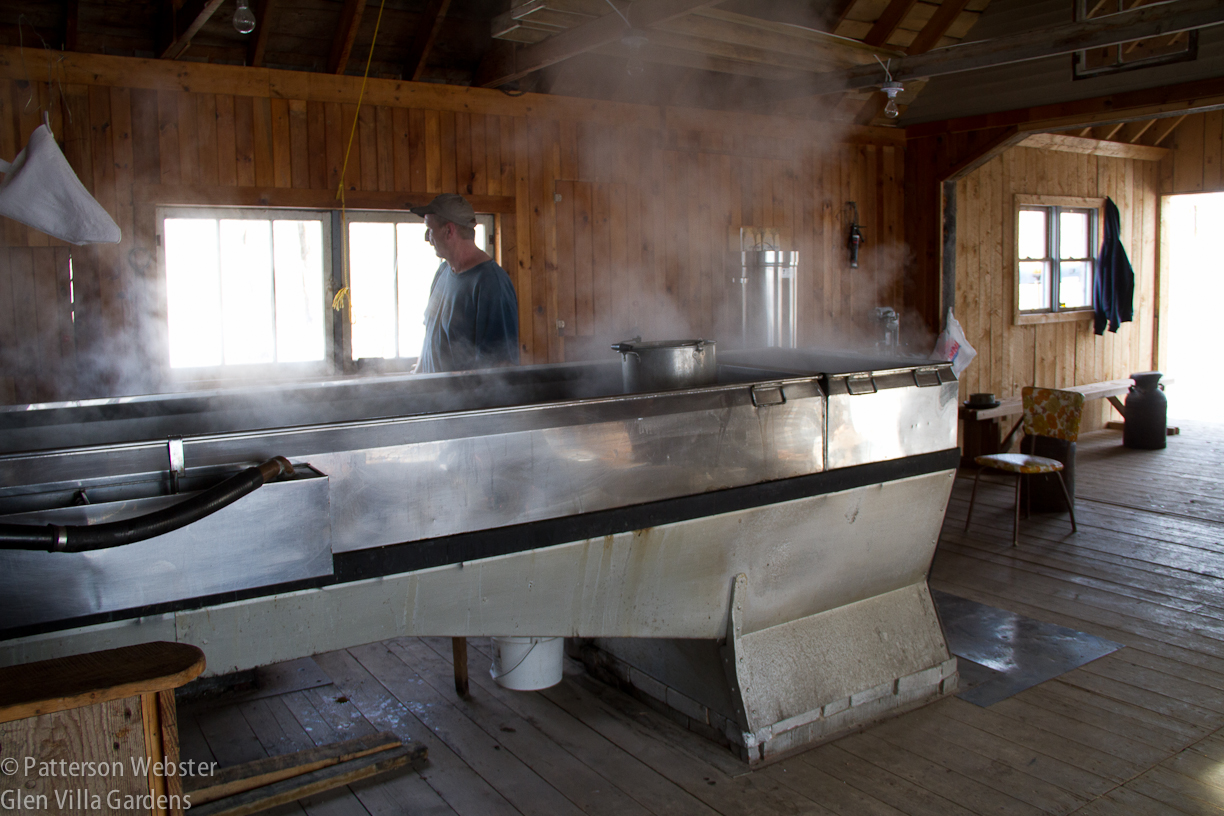
The pan is divided into channels. As the sap becomes thicker, it moves along the channels to the front of the pan.
The sap is heated to the boiling point to evaporate the water and concentrate the sugar content. Equipment designed for large-scale production can boil 90 gallons per hour; our smaller and older equipment takes twice as long. And it uses lots of wood. In a typical season we will use abut 7 runs of wood; a run is 4 ft. high, 8 ft. long and, in our case, two feet wide since this is the maximum width our fire box will hold.
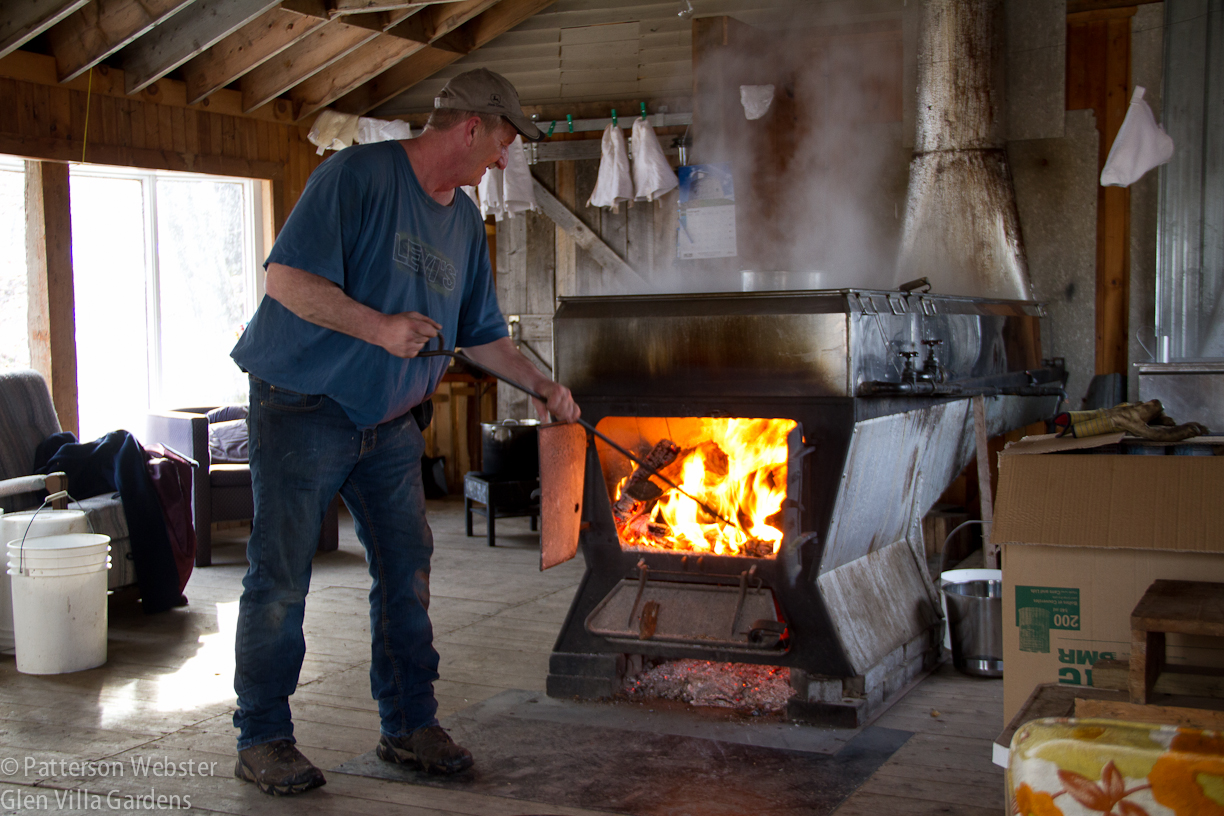
Ken stokes the fire, keeping the temperature high. This means it is hot inside the sugar house, even when it is cold outdoors.
Earlier this week, on a day just before the season ended, Ken and Jacques started to gather sap around 11am. They gathered some 200 gallons before beginning to boil. Transforming the sap into syrup took five hours of boiling, followed by another four hours of hard work.
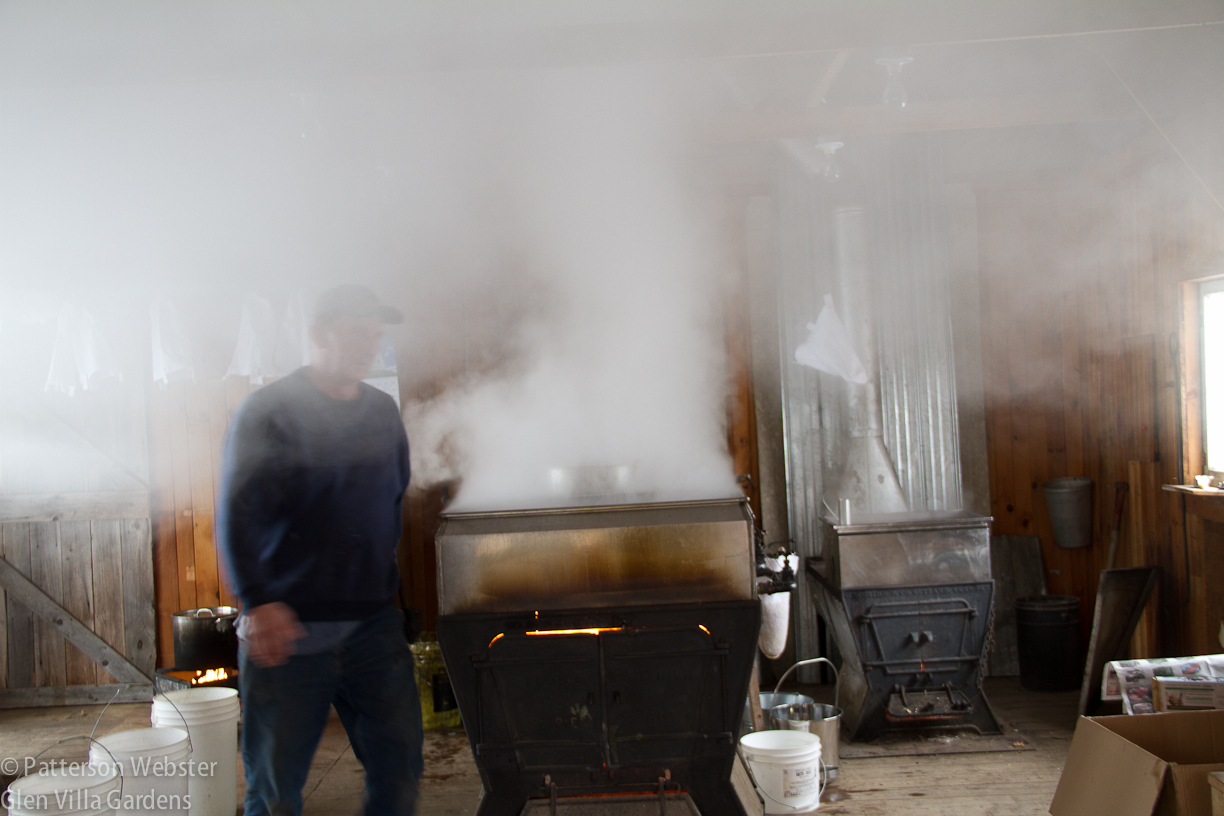
Steam rising from the pan lends a touch of mystery to the sugar house. It also makes the air inside slightly sticky and sweet.
After the initial boiling comes the step that turns concentrated sap into award-winning syrup. Ken strained the sap for the second time before heating it in a smaller pot until it reached precisely 211 degrees F, or 59C. He filtered it for the final time as he poured it into the canner.

The filters are made from a type of felted material. They come in different thicknesses. The finest filter is paper-thin.
Filtering removes sediment called sugar sand or niter that interferes with the clarity of the syrup. Keeping the filters and other pieces of equipment clean is crucial, and that means washing everything that the sap touches every single day. Sap picks up the taste of any contaminant, so washing can’t be done with detergents or bleach. We use boiling hot water and hang the filters to dry.
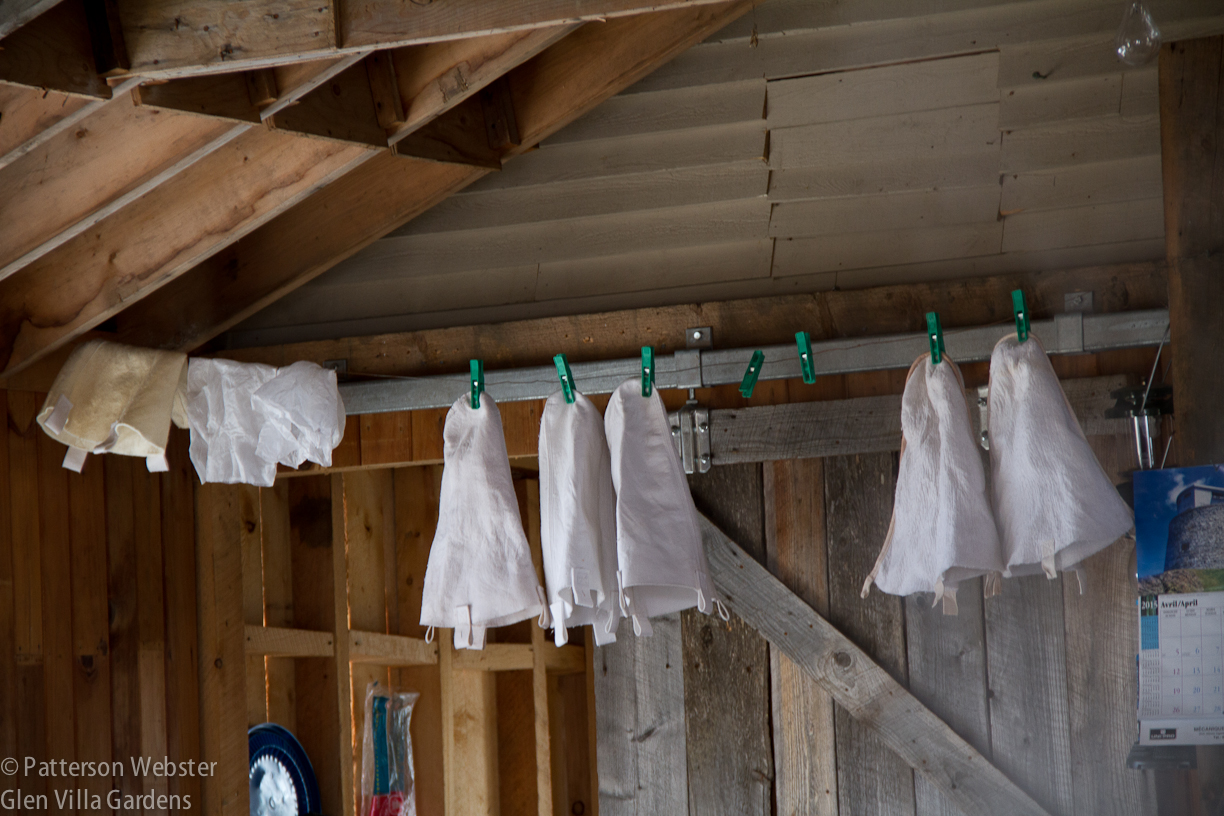
Ideally we would dry the filters outside in the sunshine but it is often too cold so we string a line indoors.
The final step is canning. We now use standard 540ml cans with a printed scene but years ago, when my father-in-law was making maple syrup, each can was labelled individually with a paper label he had printed to his own design.
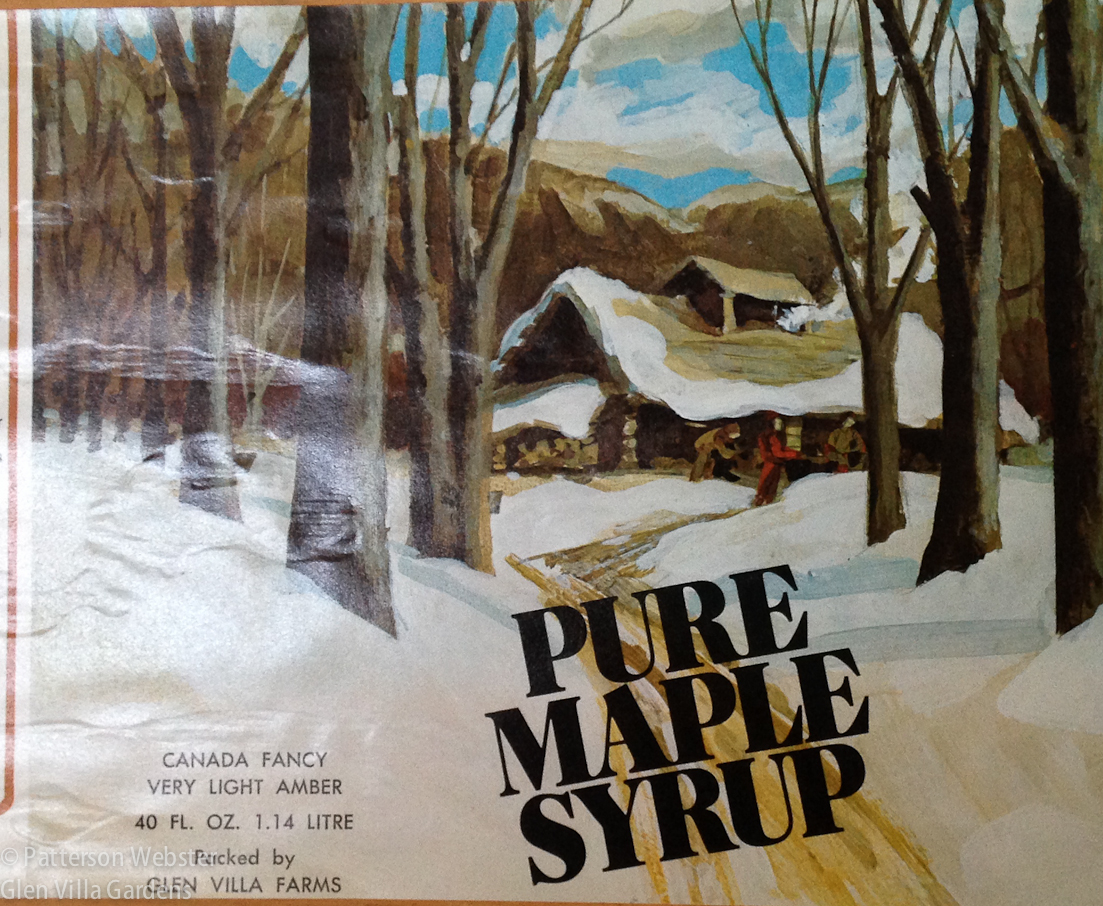
My husband and his brother had to glue labels like this one onto every single can. They didn’t enjoy the job but they did enjoy the contents.
Maple syrup season ends with a party called a sugaring off. Children from babes in arms to 80 year olds gather at the sugar camp, waiting impatiently by the troughs of packed snow as the syrup is boiled to thicken it a tiny bit more.
Then comes the magic moment when la tire is poured.
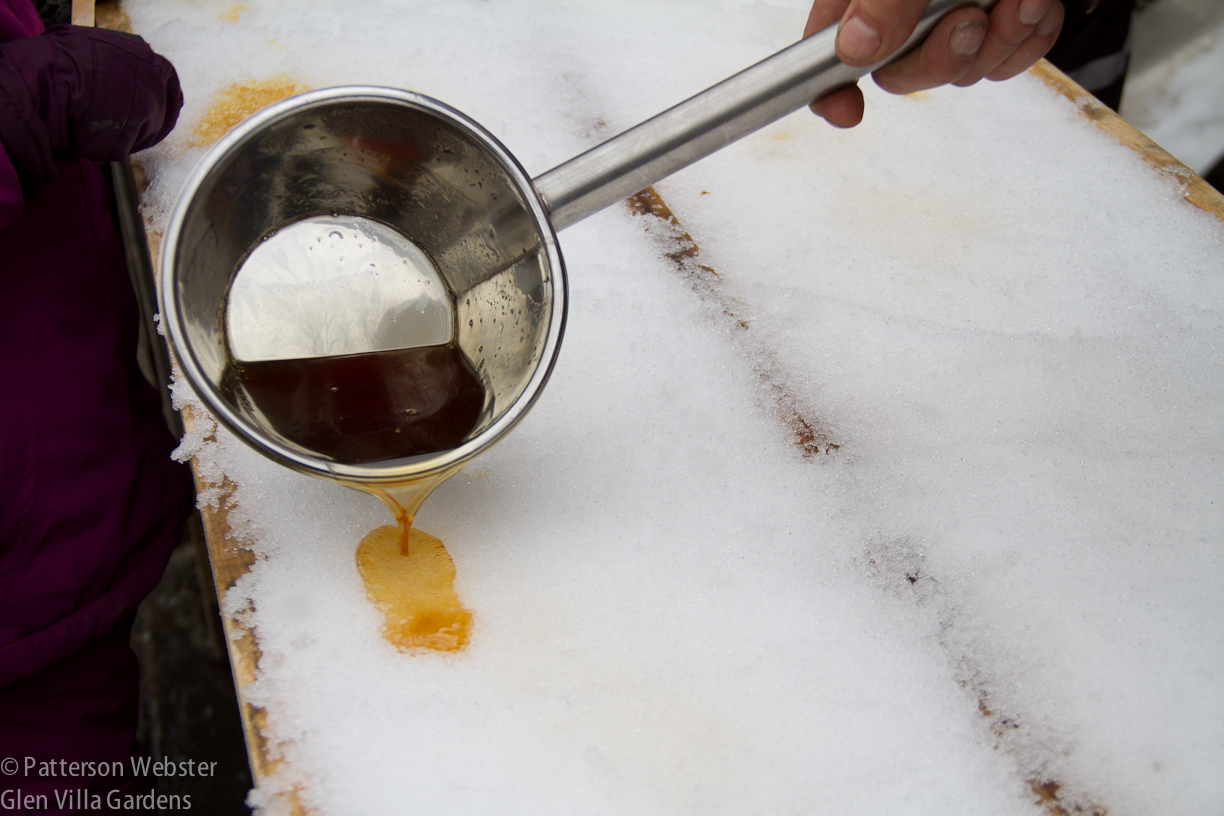
Hot syrup hardens almost immediately into la tire. In English-speaking parts of the world, this is called sugar on snow.
Everyone digs in, twirling the tire on forks or popsicle sticks before popping it into open mouths.
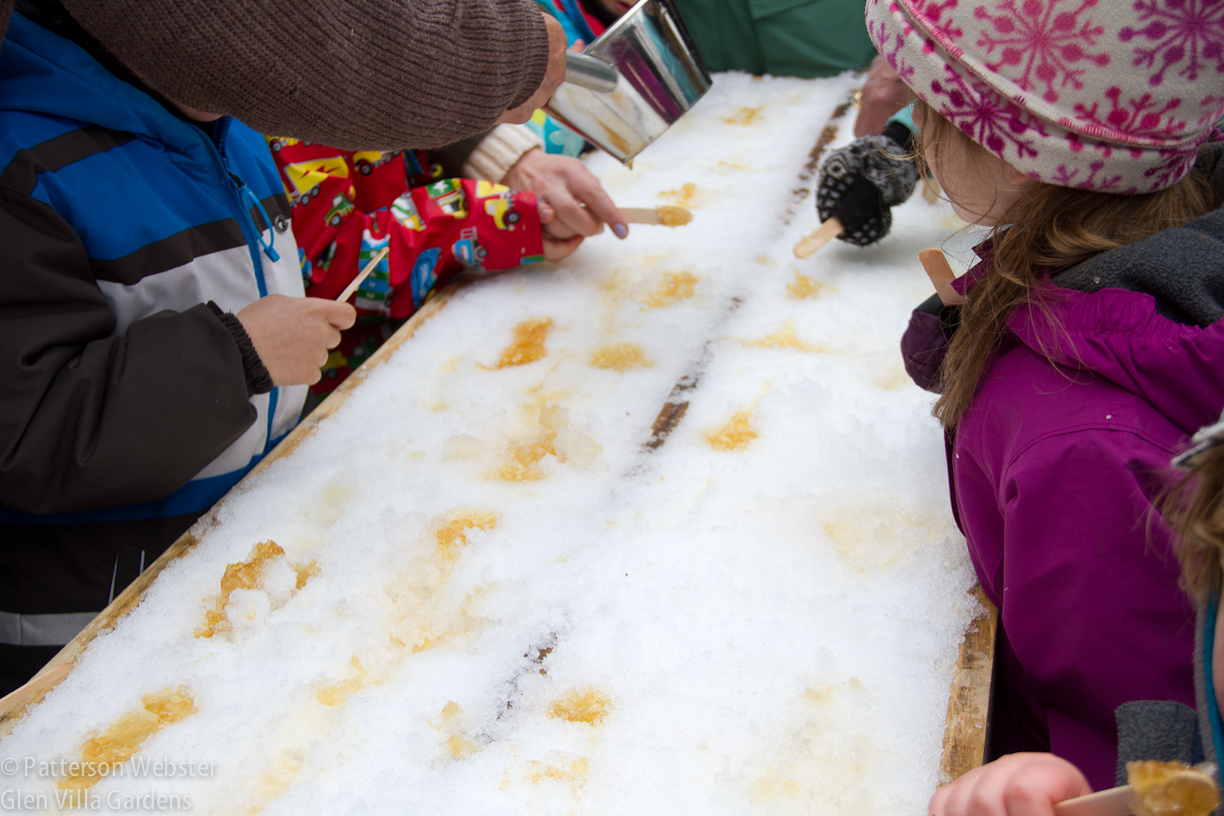
Children quickly learn how to dip and twirl to get just the right mix of syrup and snow crystals. Yum doesn’t begin to describe the sugar rush.
The taste is concentrated sweetness, balanced by crystals of snow. Pure heaven.
Traditionally, a sugaring off marked the end of winter and the beginning of spring, a time when people could gather for a bit of fun after months indoors. This is also the season of mud, when melted snow accumulates on the surface of still-frozen ground. Our sugar camp is at the end of a long dirt road, so getting there was half the fun. This year Jacques hooked a trailer to the back of the tractor, hauling people instead of wood.
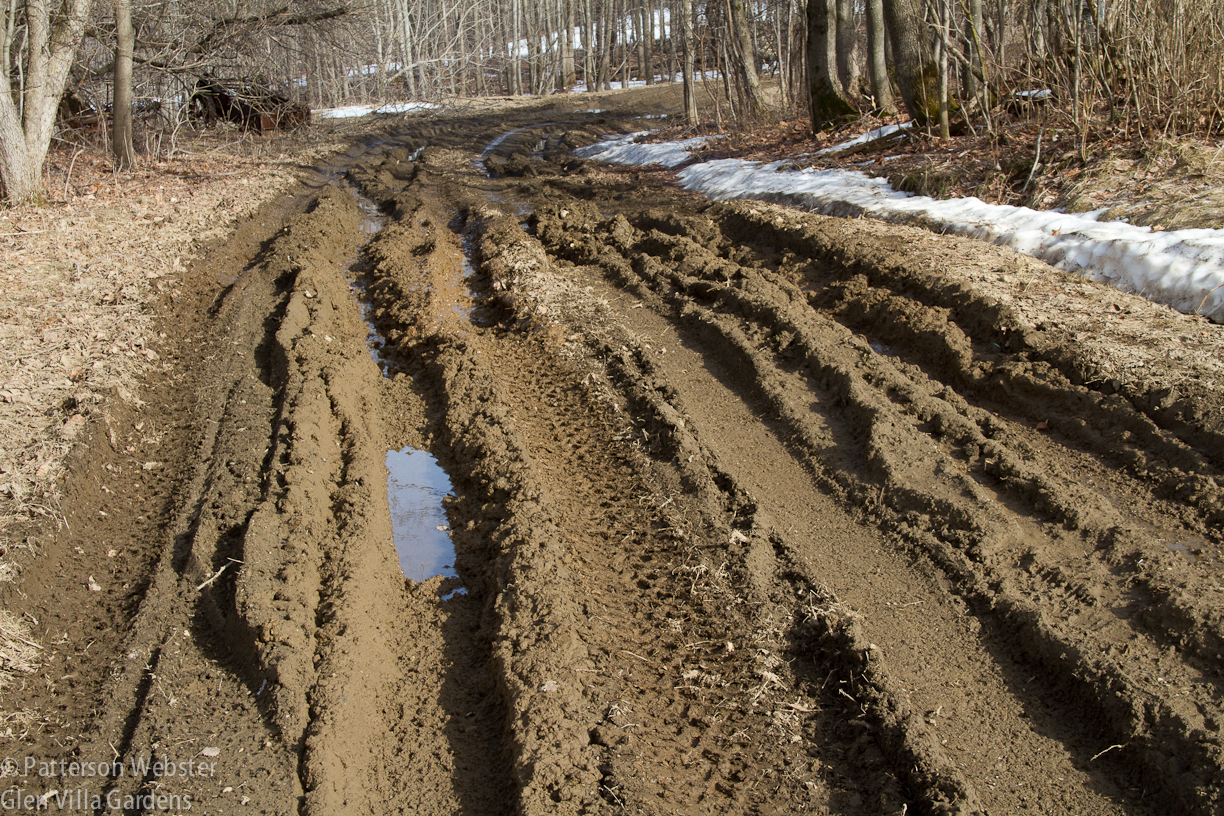
Most cars would get stuck in the mud. Thankfully this year only one driver tried it — and made the trip in and out of the sugar camp successfully.
A sugaring off is a ritual in rural Quebec. In former times, the syrup that wasn’t the highest quality was used for the tire. Usually it was served along with yeasty doughnuts, coffee and dill pickles to cut the sweetness. We prefer sausages and salads, along with wine and beer chilled in piles of snow. But one tradition of the season remains the same: the fun of a get-together that includes family and friends of several generations.
What sweeter way can there be to celebrate the arrival of spring?


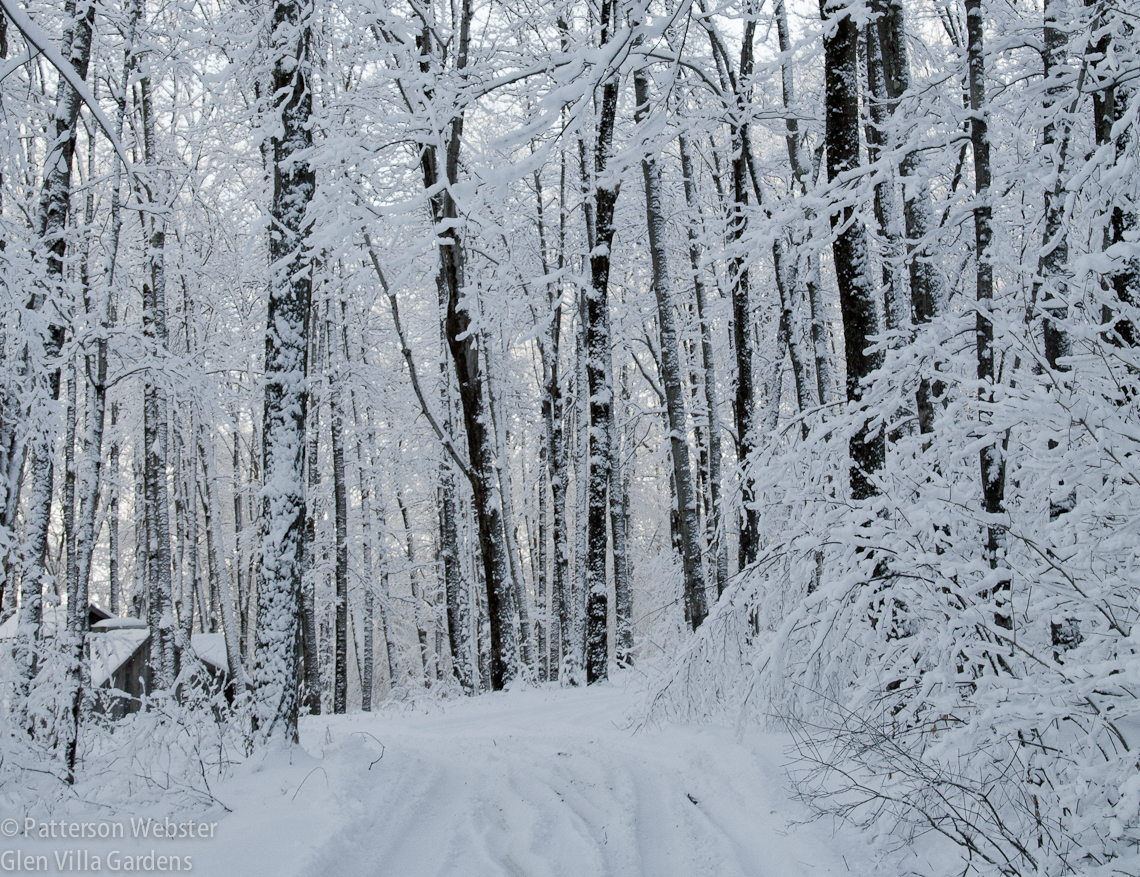
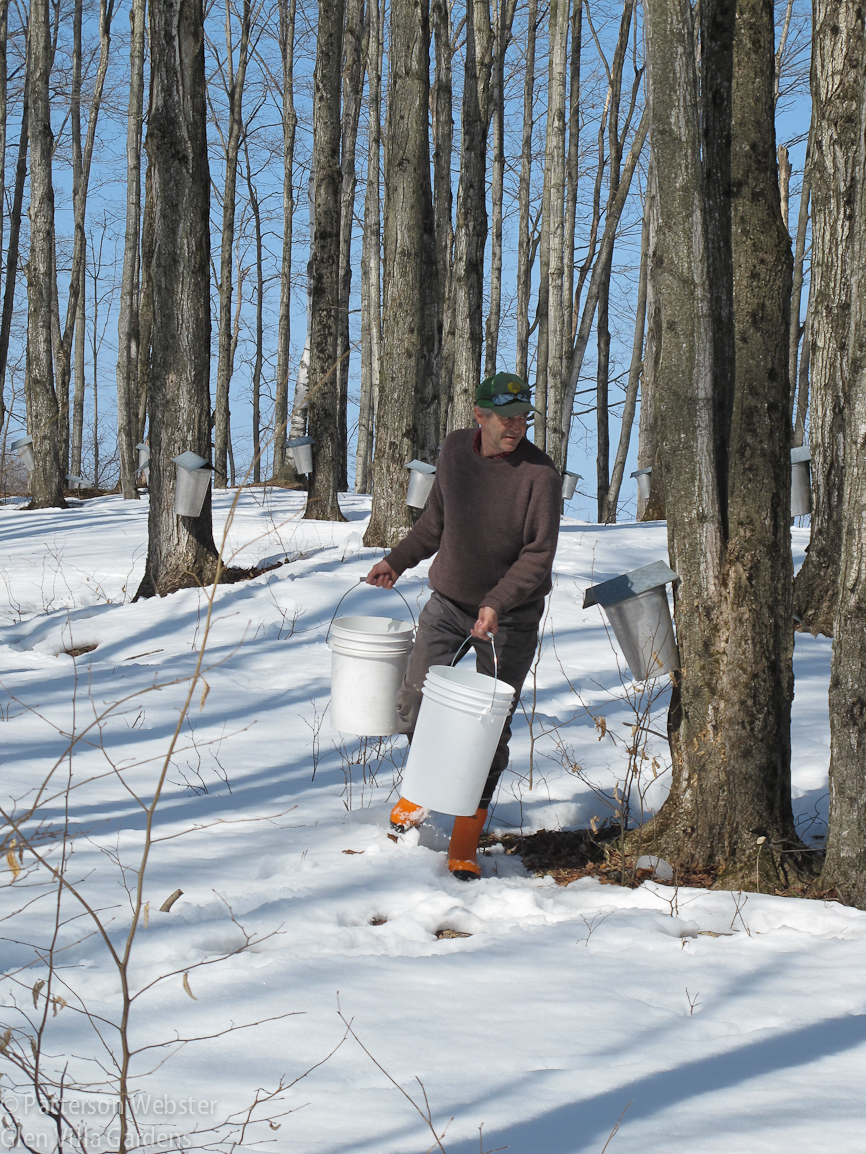






My brother has an evaporator but doesn’t produce as much as you do. And I don’t think he filters it, though he may before it goes in his evaporator.
It would be interesting to know if he filters it, Kathy. The niter doesn’t affect the taste but definitely makes the syrup cloudy.
Fascinating to understand it all – thanks, Pat!
Are there any Australian trees that are tapped? Birch trees also produce syrup but it isn’t nearly as sweet.
Not that I am aware of but that’s not to say there aren’t.
This is great Pat! Not much has changed except the inside of a sugar shack and a little more filtering.
This is great Pat.
Poppi’s Tulsa Spa is dedicated to providing customers with professional Body Sugaring and hair removal services. Experience our Wax service to get a perfect look.